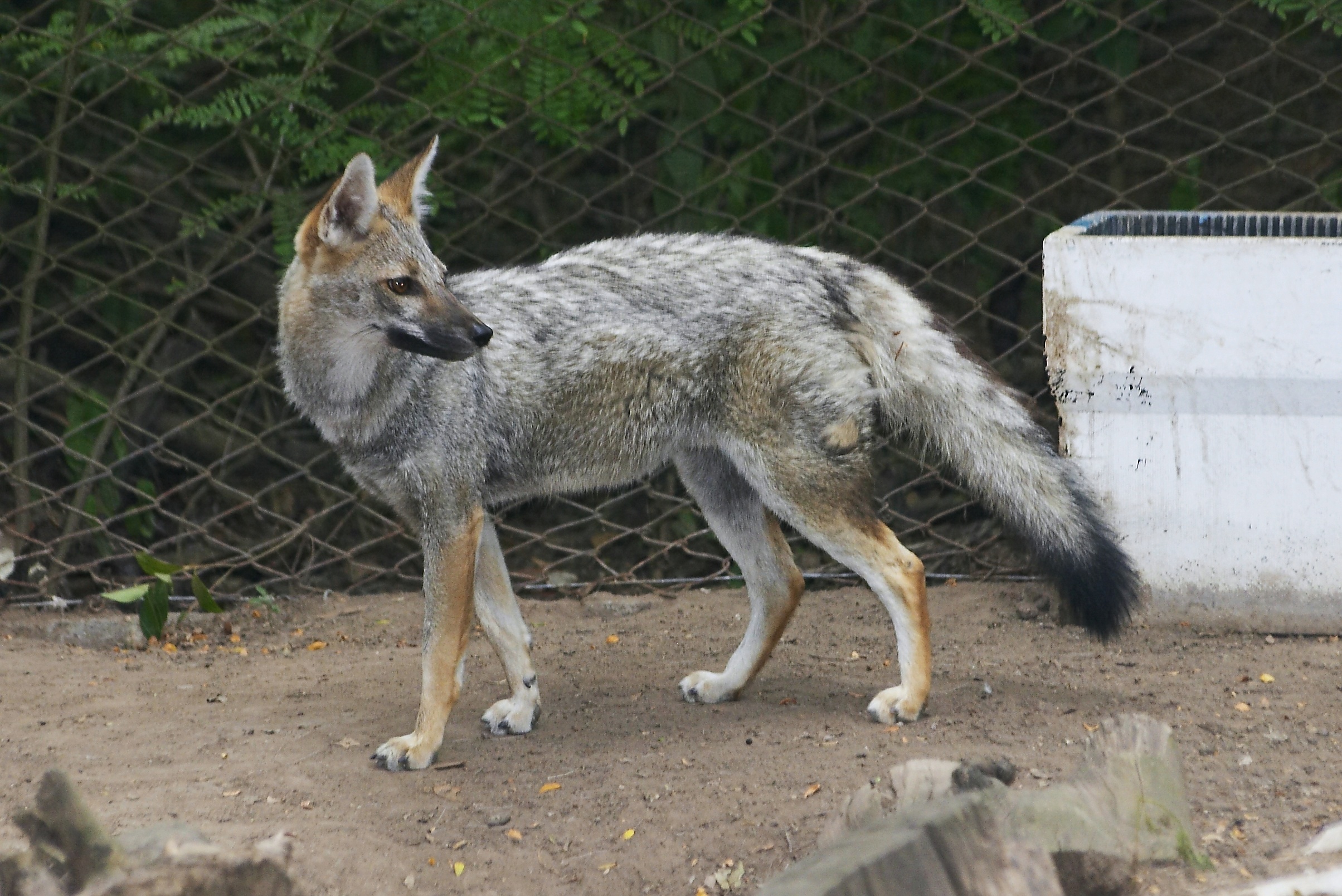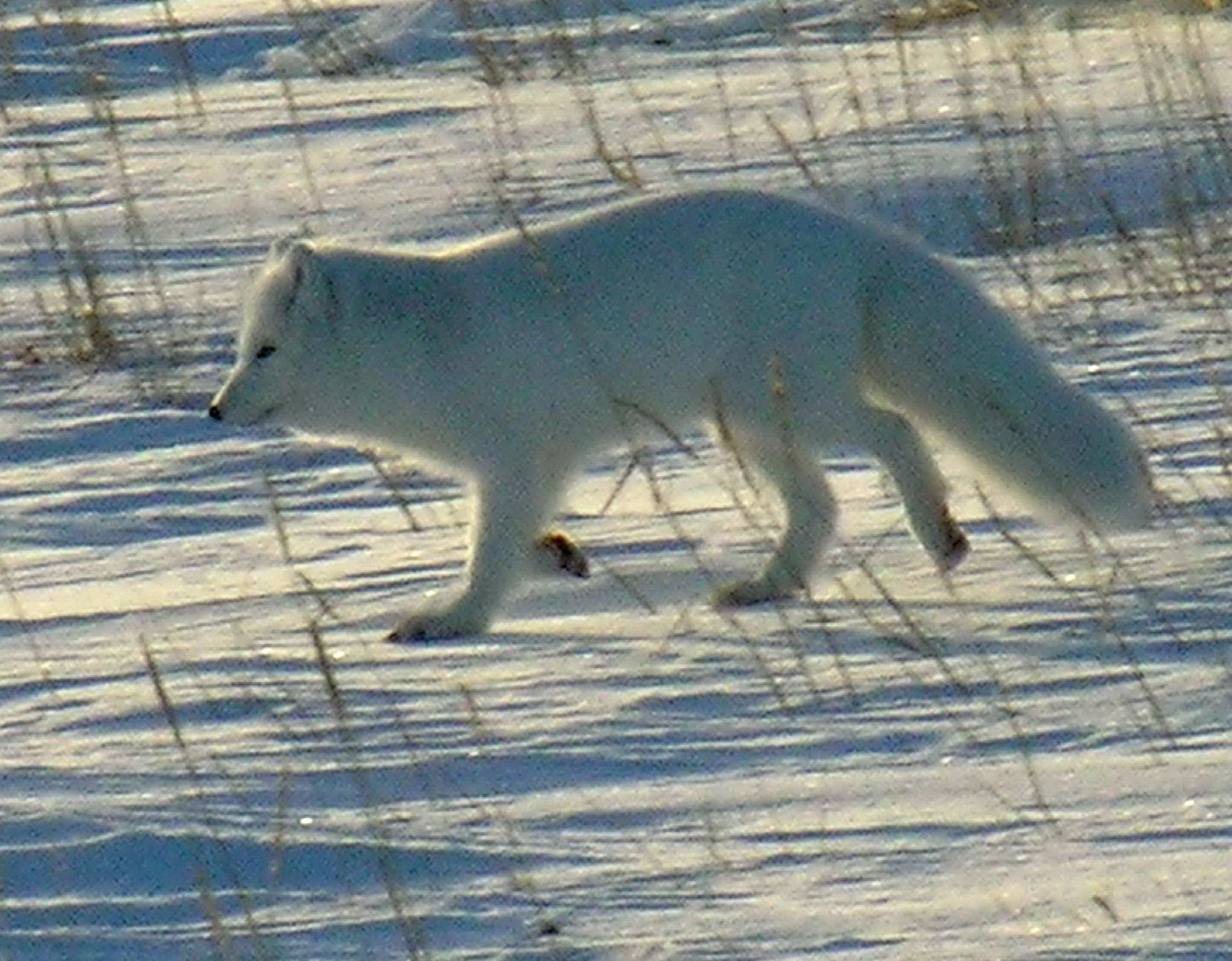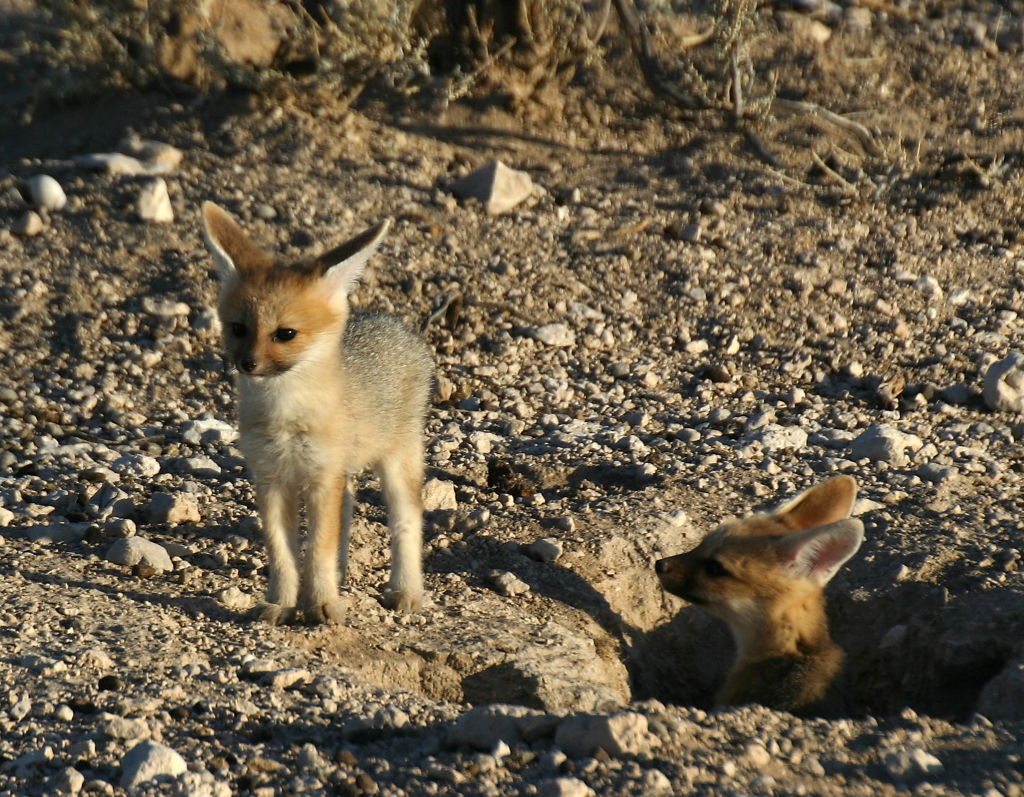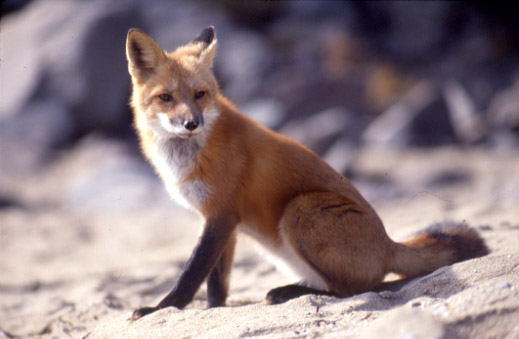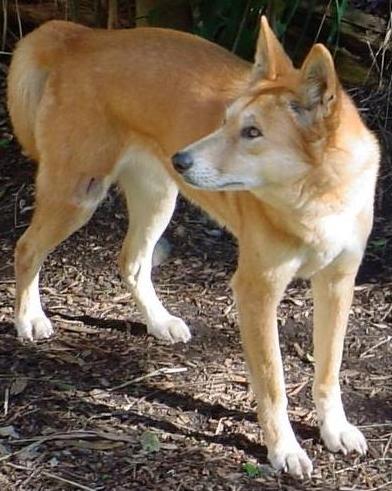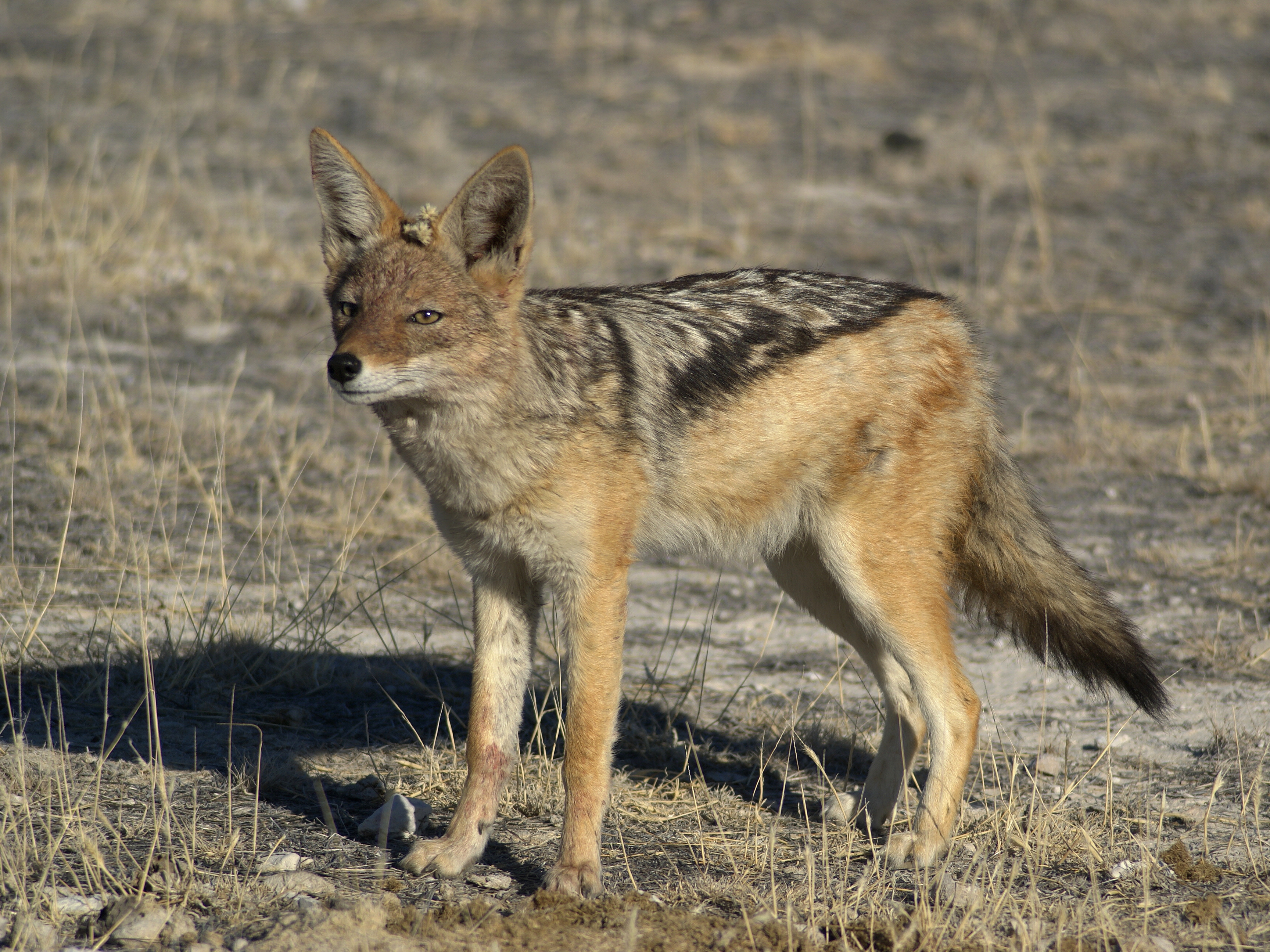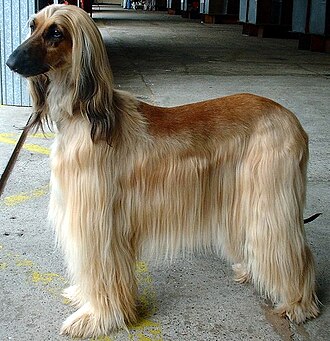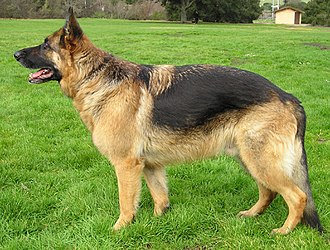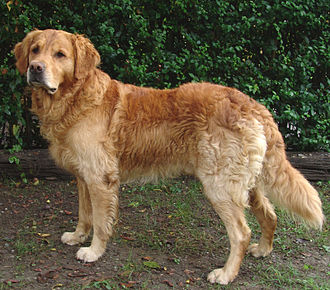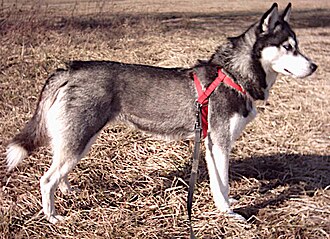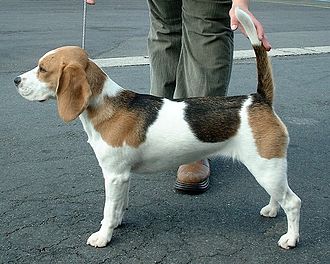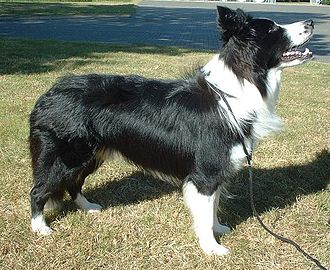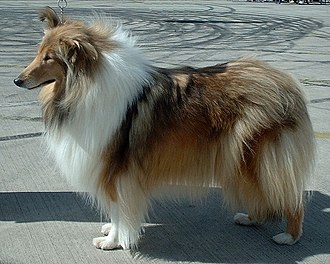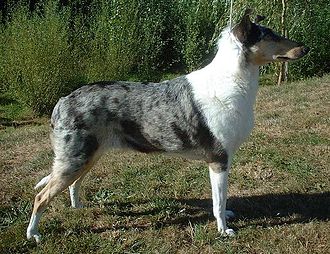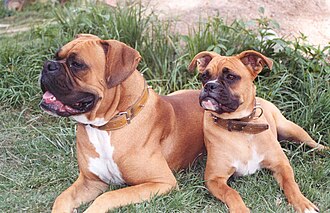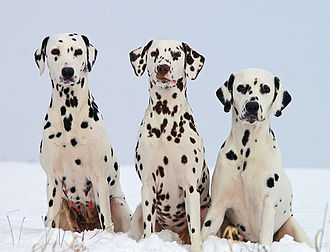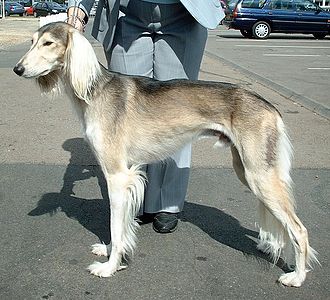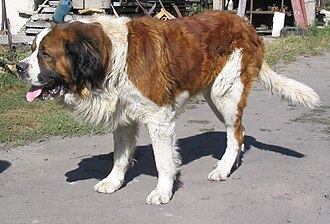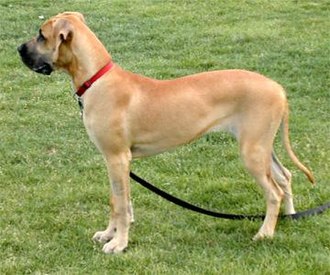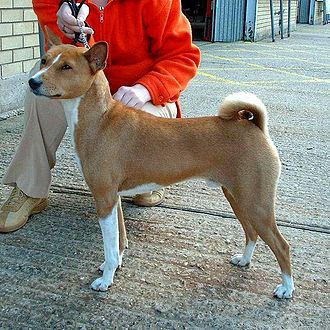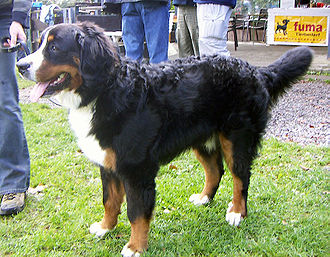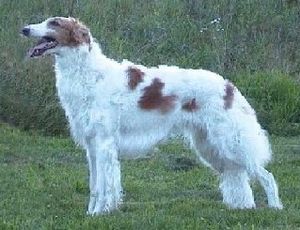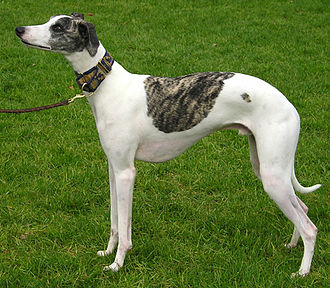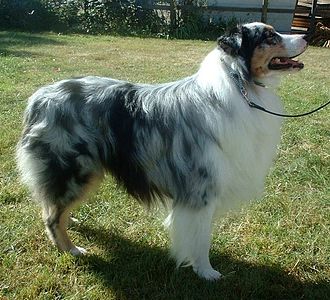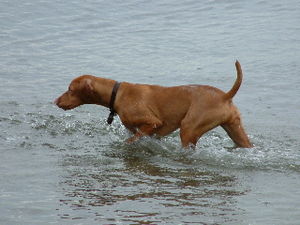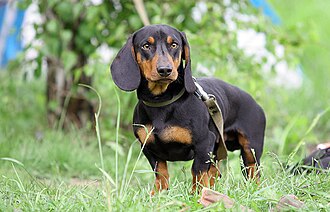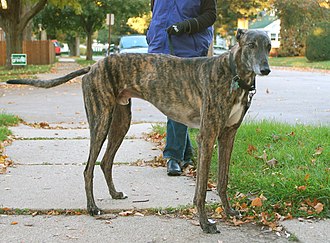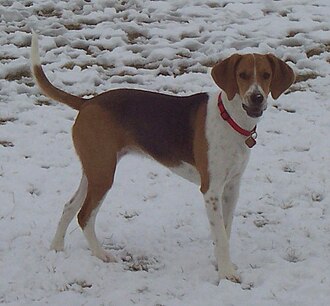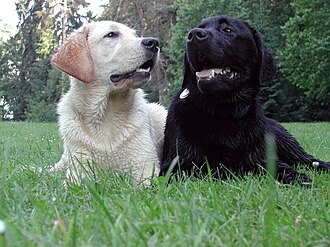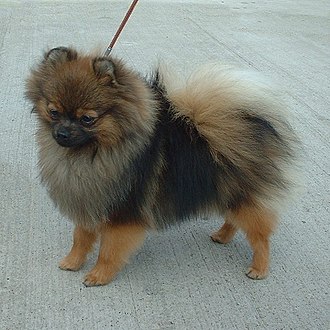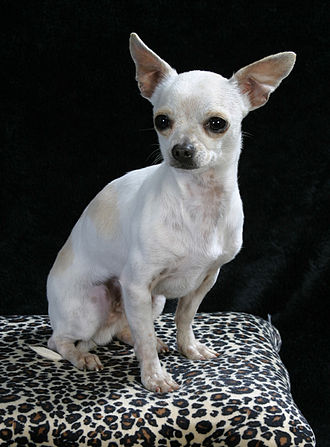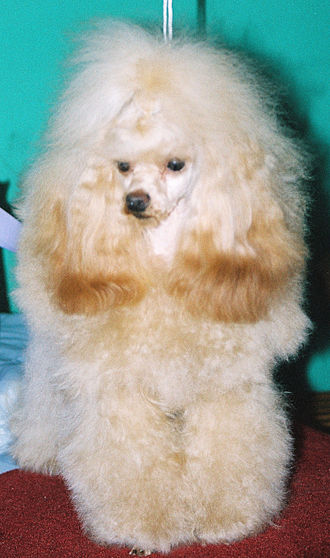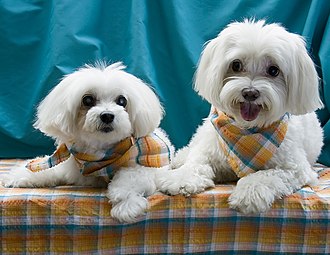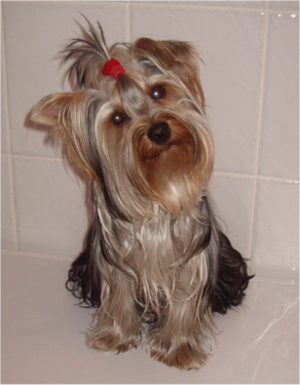Difference between revisions of "AY Honors/Dogs/Answer Key"
Tag: mobile edit |
m (Reverted edits by Jardel Andrew (talk) to last revision by W126jep) |
||
| Line 14: | Line 14: | ||
{{Honor_Master|honor=Dogs|master=Zoology|group=Domestic}} | {{Honor_Master|honor=Dogs|master=Zoology|group=Domestic}} | ||
| − | + | ==1. Give the scientific name of the dog family.== <!--T:2--> | |
The scientific name of the dog family is ''Canidae'' or ''Canine''. | The scientific name of the dog family is ''Canidae'' or ''Canine''. | ||
| − | + | ==2. Name five distinctive characteristics of the dog family.== <!--T:3--> | |
# Canines have 42 teeth. | # Canines have 42 teeth. | ||
# They walk on their toes. | # They walk on their toes. | ||
| Line 26: | Line 26: | ||
# They can see colors but not as clearly as we can | # They can see colors but not as clearly as we can | ||
| − | + | ==3. Identify from pictures or personal observation five wild members of the dog family.== <!--T:4--> | |
We present here several species of fox, but as the instructor, you should feel free to present them as one "member." This is also true of the jackal. | We present here several species of fox, but as the instructor, you should feel free to present them as one "member." This is also true of the jackal. | ||
| Line 113: | Line 113: | ||
{{clear}} | {{clear}} | ||
| − | + | ==4. Identify from pictures or personal observation 25 different breeds of dogs.== <!--T:10--> | |
Several dog breeds are presented here, but this is by no means an exhaustive list. No toy dog breeds are presented here as they can be found in requirement 9. | Several dog breeds are presented here, but this is by no means an exhaustive list. No toy dog breeds are presented here as they can be found in requirement 9. | ||
| Line 285: | Line 285: | ||
}} | }} | ||
{{clear}} | {{clear}} | ||
| − | |||
==5. Name five contributions the dog family has made to man.== | ==5. Name five contributions the dog family has made to man.== | ||
* Companion animals. | * Companion animals. | ||
Revision as of 12:58, 22 February 2016
Template:Honor desc Template:Honor Master Template:Honor Master
1. Give the scientific name of the dog family.
The scientific name of the dog family is Canidae or Canine.
2. Name five distinctive characteristics of the dog family.
- Canines have 42 teeth.
- They walk on their toes.
- They have four claws on their hind feet, and five on the front.
- They have two coats - an outer coat of coarse hair, and an inner coat of fine hair.
- They have a keen sense of smell.
- They have excellent hearing due to ear flaps called leathers.
- They can see colors but not as clearly as we can
3. Identify from pictures or personal observation five wild members of the dog family.
We present here several species of fox, but as the instructor, you should feel free to present them as one "member." This is also true of the jackal.
Gray Fox
Gray Fox (Urocyon cinereoargenteus)
Description: The gray fox is small and has a pepper brown back, tawny sides, neck and legs, a white belly, and a black stripe along its back and tail. Another black stripe crosses its face from the nose to the eye and continuing to the side of the head. Standing about 12-16 inches at the shoulders, weighing up to 16 pounds and having an overall body length of up to 47 inches, the gray fox is an agile canid able to scurry up and down trees with relative ease.
Arctic Fox
Arctic Fox (Alopex lagopus)
Description: The Arctic fox, also known as the polar fox, is a small fox native to cold Arctic regions of the Northern Hemisphere. Arctic foxes will eat pretty much anything. Their prey includes voles, lemmings, hares, ground squirrels, and bird eggs. Foxes living on the coast also eat shellfish, sea urchins, dead seals and fish, beached whales, and nesting seabirds. In winter when food is scarce, they may follow a polar bear and after the bear makes a kill, eats and leaves, they will steal what ever scraps of meat are left. In winter, their light coat protects them from predators, esp. polar bears, by blending in to the white snow.
Pale Fox
Pale Fox (Vulpes pallida)
Description: The Pale Fox is a species of fox which inhabits the Sahel from Senegal in the west to Sudan in the east. It is widespread throughout the Sahel but its environmental status is described as "data deficient" due to lack of intensified study of the pale fox in the wild. The pale fox is long-bodied with relatively short legs and a narrow muzzle. Its ears are long and rounded at the tip. Its tail is bushy and black-tipped. The upperpart of its body has a pale sandy color, while the underpart is whitish. A dark ring surrounds the fox's eyes.
Cape Fox
Cape Fox (Vulpes chama)
Description: The Cape Fox has black or silver gray fur with flanks and underside in light yellow. The tip of its tail is always black. The Cape Fox is found in Southern Africa from Zimbabwe to Angola. It prefers the open savanna and semi-arid regions in southwestern Africa, from Southern Zimbabwe to the Cape province.
Red Fox
Red Fox (Vulpes vulpes)
Description: The Red Fox is the most familiar of the foxes. In Britain and Ireland, where there are no longer any other native wild canids, it is referred to simply as the "Fox". It has the widest range not just of any fox but of any terrestrial carnivore. As its name suggests, its fur is predominantly reddish-brown
Gray Wolf
Gray Wolf (Canis lupus)
Description: The Gray Wolf, also known as Timber Wolf or Wolf, shares a common ancestry with the domestic dog (Canis lupus familiaris), as evidenced by DNA sequencing and genetic drift studies. Gray wolves were once abundant and distributed over much of North America, Eurasia, and the Middle East. Today, for a variety of human-related reasons including widespread habitat destruction and excessive hunting, wolves inhabit only a very limited portion of their former range. Though listed as a species of least concern for extinction worldwide, for some regions including the Continental United States, the species is listed as endangered or threatened.
Coyote
Coyote (Canis latrans)
Description: Coyotes are native to North America and are found from Alaska, U.S. to as far south as Panama. European explorers first encountered these canines during their travels in the American Southwest. They may occasionally assemble in small packs, but naturally hunt alone. Coyotes live an average of about 6 to 10 years.
Dingo
Dingo (Canis lupus dingo)
Description: The dingo is a type of wild dog, probably descended from the Indian Wolf (Canis lupus pallipes). It is commonly described as an Australian wild dog, but is not restricted to Australia. Modern dingoes are found throughout Southeast Asia, mostly in small pockets of remaining natural forest, and in mainland Australia, particularly in the north.
Golden Jackal
Golden Jackal (Canis aureus)
Description: The Golden Jackal has golden reddish-yellow fur with a white mark on the throat, but the color can vary with age, region and season; in winter the coat darkens. Typical body length is 70-85 cm and height is 40 cm. It can weigh as little as 8 kg and much as 10 kg. Males tend to be larger than the females.
Side-striped Jackal
Side-striped Jackal (Canis adustus)
Description: Side-striped jackal is a greyish brown to tan with a white stripe from the front legs to the hips and has a dark tail that has a white tip. Side-striped jackal can weigh from 14 to 30 lb. Males tend to be larger than the females. They are social within small family groups, communciating via yips, "screams" and a soft owl like hooting call. They are nocturnal, and rarely active during the day.
Black-backed Jackal
Black-backed Jackal (Canis mesomelas)
Description: The Black-backed jackal (Canis mesomelas) is an African canine with a fox-like appearance, tan fur, and a thick stripe of black and silver running down its back. They weigh anywhere from 15 to 30 pounds and are 15 to 30 centimeters at the shoulder. Males are usually larger than females.
4. Identify from pictures or personal observation 25 different breeds of dogs.
Several dog breeds are presented here, but this is by no means an exhaustive list. No toy dog breeds are presented here as they can be found in requirement 9.
Afghan Hound
Afghan Hound
The Afghan Hound is a very old sighthound dog breed. Distinguished by its thick, fine, silky coat and its tail with a ring curl at the end, the breed acquired its unique features in the cold mountains of Afghanistan, where it was originally used to hunt wolves, foxes, and gazelles.
German Shepherd
German Shepherd
German Shepherds (or Alsatians) are highly intelligent, agile and well-suited to active working environments. They are often deployed in various roles such as police work, guarding, Search and Rescue, Therapy and in the military. They can also be found working as guide dogs for the blind. Despite their suitability for such work, German Shepherds can also make loyal and loving pets inside the home. They enjoy being around people and other animals.
Golden Retriever
Golden Retriever
The Golden Retriever is a popular breed of dog, originally developed to retrieve downed fowl during hunting. It is one of the most common family dogs as it is easy to handle, very tolerant and normally very happy and friendly. They are a low-maintenance dog and thrive on attention, regular exercise, a balanced diet, and regular veterinary check-ups. Golden Retrievers are usually compatible with all people and other dogs. And they are also very smart dogs. Love playing around and having someone there with them.
Siberian Husky
Siberian Husky
The Siberian Husky is a working dog breed that originated in eastern Siberia. The Siberian Husky is a medium-sized dog. Siberian Huskies are a resilient breed; known for their ability to thrive in the arctic cold, they can work and live in temperatures as low as negative 75 degrees Fahrenheit (-60ºC). They were originally bred by the Chukchi tribes for use as a village dog to accomplish such tasks as pulling sleds.
Beagle
Beagle
A Beagle is a medium-sized dog breed and a member of the hound group, similar in appearance to a Foxhound but smaller with shorter legs, and with longer, softer ears. Beagles are scent hounds used primarily for tracking deer, bear, and other game. They are a loyal breed and most often very well tempered. Beagles love exercise and being around people.
Border Collie
Border Collie
The Border Collie is a hard-working breed of herding dog that originated in the border country of England and Scotland. They are regarded by many as the most intelligent dog breed. Like most working dogs, Border Collies are highly energetic, and as a result have a tendency towards neurotic or destructive behavior if not given enough to do. They are still frequently used on farms all over the world for assisting with the handling of livestock. Though known to be reserved with strangers, these dogs can also be protective of a human family member and affectionate to those they know.
Rough Collie
Rough Collie
The Rough Collie is a breed of dog developed originally for herding in Scotland. It is well known because of the works of author Albert Payson Terhune, and was popularized in later generations by the Lassie novel, movies, and television shows.
Smooth Collie
Smooth Collie
The Smooth Collie is a breed of dog developed originally for herding. It is a short-coated version of the Rough Collie of Lassie fame. Some breed organizations consider the smooth-coat and rough-coat dogs to be variations of the same breed.
Boxer
Boxer
Boxers are a breed of stocky, medium-sized, short-haired dog with a smooth fawn or brindled coat and square-jawed muzzle. Boxers have very strong jaws and a powerful bite. The character of the Boxer is of the greatest importance and demands the most careful attention. He is renowned for his great love and faithfulness to his master and household, his alertness, and fearless courage as a defender and protector. The Boxer is docile but distrustful of strangers. He is bright and friendly in play but brave and determined when roused. His intelligence and willing tractability, his modesty, and cleanliness make him a highly desirable family dog and cheerful companion.
Bulldog
Bulldog
The bulldog is a relatively small but stocky breed, with a compact body and short, sturdy limbs. Its shape results in a waddle-like gait. Bulldogs are known for their short muzzles and the saggy skin on their faces, creating the apparent "frown" that has become a trademark of the breed. Bulldogs come in a variety of colors and ideally have a smooth, short coat.
Dalmatian
Dalmatian
The Dalmatian is a breed of dog, noted for its white coat with either black or liver spots. Today the Dalmatian serves as a fire house mascot, but back in the days of horse-drawn fire carts, they provided a valuable service. Dalmatians and horses are very compatible, so the dogs were easily trained to run in front of the engines to help clear a path and quickly guide the horses and firefighters to the fires and sometimes used as rescue dogs to locate victims in burning structures.
Saluki
The Saluki is a breed of dog that is a member of the sighthound family, that is, hounds that hunt by sight rather than scent. The Saluki is one of the oldest dog breeds known, and originally came from the Middle East, where it was used (and is still used to some extent) by the Bedouins for hunting hare and gazelle.
Saint Bernard
Saint Bernard
The St. Bernard Dog is a large breed of dog originally bred for rescue and as a working dog. A full-grown male can weigh between 150 and 220 lb (68 and 100 kg). The Saint Bernard is known for its loyalty and vigilance and is tolerant of both children and animals. Because of these traits, it has become a family dog. They also make good watchdogs, as their size can be intimidating to strangers, though their temperament is gentle.
Great Dane
Great Dane
The Great Dane's large and imposing appearance belies its friendly nature; the breed is often referred to as a gentle giant. Great Danes are generally well-disposed toward other dogs, other non-canine pets, wild animals, and humans (including strangers and children). However, some Great Danes have dominance issues, are aggressive with other dogs of the same sex, or chase small animals.
Basenji
Basenji
The Basenji is a breed of hunting dog that originates in central Africa. It is considered by some, particularly in North America, to be a member of the sighthound family. The Basenji produces an unusual yodel-like sound, due to its unusually shaped larynx. Although Basenjis do not bark per se, they can mimic sounds, and thus are able to mimic barks if raised among barking dogs. In behavior and temperament they have some traits in common with cats.
Bernese Mountain dog
Bernese Mountain dog
The “Berner” is instantly recognized by its distinctive tricolor pattern: body, neck, legs, head and ears black; cheeks, stockings and eyespots rich tan, toes, chest, muzzle, tail tip and blaze between the eyes white. The pattern is rigid and varies only slightly in the amount of white. The eyes are an expressive dark brown.
Borzoi
Borzoi
The Borzoi is a breed of dog also called the Russian Wolfhound. They have medium-length, slightly curly hair and are similar in shape to Greyhounds. They are a member of the sighthound family. Borzoi can come in any color or color combination. As a general approximation, "long haired greyhound" is a useful description.
Whippet
Whippet
Whippets are generally quiet and gentle dogs, content to spend much of the day sleeping. They are not generally aggressive towards other animals, and although especially attached to their owners, they are friendly to visitors. They are not prone to snapping, so they are good with young children. Because of their friendly nature they have often been known to be used in aged care facilities.
Australian Shepherd
Australian Shepherd
The Australian Shepherd is a working dog that was developed in the United States in the 19th century. The dog, commonly known as an Aussie, is popular in its native California and is growing in popularity in countries across the world. Contrary to its name, the breed did not originate in Australia. Like all working breeds, the Aussie has considerable energy and drive and usually needs a job to do. It often excels at dog sports such as frisbee and dog agility.
Hungarian Vizsla
Hungarian Vizsla
The Hungarian Vizsla, pronounced VEEZH-la (zh as in vision), is a dog breed originating in Hungary. Vizslas are known as excellent hunting dogs, and also have a level personality making them suited for families.
Dachshund
Dachshund
The dachshund is a short-legged, elongated dog breed of the hound family. The breed was developed to scent, chase, and hunt badgers and other hole-dwelling animals. Due to the long, narrow build, they are sometimes referred to in the United States and elsewhere as a wiener dog, hot dog, or sausage dog, though such terms are sometimes considered disparaging.
Greyhound
Greyhound
The Greyhound is a breed of dog used for companionship, coursing game and racing. It is commonly thought to be the third fastest land mammal, next to the pronghorn antelope and the cheetah; a combination of long, powerful legs, deep chest and aerodynamic build allows it to reach speeds of up to 72 km/h (45 mph), in less than one and a half seconds, or within 5-6 strides. However, the Pronghorn Antelope is quite a bit faster than the Greyhound.
Harrier
Harrier
The Harrier is a small dog breed of the hound class, used for hunting rabbits ("hares"). It resembles a foxhound but is smaller. A humorous, yet fairly accurate short-hand description of a Harrier is that of "a Beagle on steroids." It is a muscular hunting hound with a short, hard coat. It has large bones for stamina and strength.
Labrador Retriever
Labrador Retriever
The Labrador Retriever ("Labrador" or "Lab" for short), is one of several kinds of retriever, and is the most popular breed of dog (by registered ownership) in both the United States and the United Kingdom. The breed is exceptionally friendly, intelligent, energetic and good natured, making them excellent companions and working dogs. Labrador Retrievers respond well to praise and positive attention. They are also well known as enjoying water, since historically, they were selectively bred for retrieving in water environments as 'gun dogs' and as companions in waterfowl hunting.
5. Name five contributions the dog family has made to man.
- Companion animals.
- Seeing-eye dogs help the blind gain independence.
- Watchdogs protect property (and their owners).
- Hunting dogs help retrieve and flush out game.
- Sled dogs are used as transportation.
- Dogs herd cattle, sheep and other livestock.
- They can be used to follow a scent trail, whether to catch a criminal or find a missing person.
- They can detect explosives.
- They are used to search through earthquake rubble for victims.
6. Give the name of the smallest and largest breed of dog.
The smallest breed of dog is the Chihuahua. Many breeds can claim to be the "largest" depending on how "largest" is defined. The tallest is the Irish Wolfhound, but it is outweighed by the Mastiff, the Great Dane, and the Saint Bernard. The heaviest of these is the Saint Bernard.
7. Write or describe orally the value to man of the following dogs:
a. Seeing-eye
Seeing-eye dogs, or guide dogs are assistance dogs trained to lead blind or visually impaired people around obstacles. The human half of the guide dog team does the directing, based upon skills acquired through previous mobility training. The handler might be likened to an aircraft's navigator, who must know how to get from one place to another, and the dog is the pilot, who gets them there safely.
Despite regulations or rules that deny access to animals in restaurants and other public places, in many countries, guide dogs and other types of assistance dogs are protected by law, and therefore may accompany their handlers most places that are open to the public.
b. Saint Bernard
The ancestors of the St. Bernard are the herding dogs of Swiss farmers as well as hunting dogs and watchdogs. Their history has also been connected with the hospice at the Great St. Bernard Pass.
The most famous Saint Bernard to save people at the pass was Barry, who reportedly saved somewhere between 40 and 100 lives. There is a monument to Barry in the Cimetière des Chiens, and his body was preserved in the Natural History Museum in Berne, Switzerland.
The classic St. Bernard looked very different from the St. Bernard of today, but an avalanche killed off many of the dogs used for breeding. Breeders crossed the remaining dogs with other dogs, but in the process they lost much of their use as rescue dogs.
c. Shepherd
A shepherd dog is a type of domestic dog whose original purpose was to herd or guard sheep, though they have been used for other types of livestock as well. A herding dog will keep a herd or flock of animals together and help a farmer direct them from one place to another (such as from a sheep fold to a pasture). They will also guard livestock from predators.
d. Collie
Collies are a type of shepherd dog. Some say the Border Collie is the most intelligent breed of dog.
e. Eskimo
The Eskimo Dog, otherwise known as the Qimmiq (Inuit for "dog"), or what is considered to be the more culturally sensitive Canadian Inuit Dog, is a larger breed of Arctic dog commonly found pulling sleds for their Inuit counterparts. However, as snowmobiles tend to be faster and more efficient, the Eskimo Dog is now a rare breed.
8. Write or tell what special contribution dogs have made to man in wartime.
Dogs have been used by the military since ancient times. They have been used:
- To sniff out landmines
- To carry messages
- As sentries
- As scouts to detect booby-traps
- As attack dogs in battle
9. Identify from pictures or personal observation five dogs that are classed as "toy" dogs.
Pomeranian
The head of the Pomeranian is wedge-shaped, making it somewhat foxy in appearance. The ears are small and set high. Its tail is characteristic of the breed and should be turned over the back and carried flat, set high. The Pomeranian is a very active dog who is intelligent, courageous, and a loyal companion. But due to its small size can suffer abuse from children. Beneath the Pomeranian's fur is a small but muscular dog, similar to a Chihuahua.
Chihuahua
Chihuahuas are best known for their large eyes; small size; and large, erect ears. Chihuahuas are prized for their devotion, ferocity and personality. Their curious nature and small size make them easily adaptable to a variety of environments, including the city and small apartments. Chihuahuas are often stereotyped as high-strung, though it has been shown that correct training and socialization can result in an outstanding companion animal.
Toy Poodle
Poodles are intelligent, alert, and active. Arguably one of the most intelligent breeds, their aptitude has made them ideal for performing in circuses across the globe for centuries. Because they are so intelligent, they can become bored easily, and can get quite creative about finding mischief.
Maltese
The Maltese is covered from head to foot with a mantle of long, silky, white hair. Adult Maltese range from roughly 3 to 10 lb (1.4 to 4.5 kg)
Yorkshire terrier
This long-haired terrier is known for its playful demeanor and distinctive blue and tan coat. Yorkies can be very small, usually weighing between 5 and 7 pounds (2.5 to 3.5 kilograms). In fact, the smallest dog in the world was a Yorkshire Terrier. It was no bigger than a match box.
10. What is the only dog that has a wholly blue or black tongue?
The Chow chow.
11. Which is the fastest-running dog?
The matter of which dog breed is the fastest is a matter of dispute. Some say the Saluki, and others say the Greyhound.
12. Which member of the "toy" dogs has become the most popular?
The Yorkshire Terrier & is currently the most popular breed of toy dog, and the third most popular dog breed overall (nearly overtaking the Golden Retriever for second place in 2005).
13. What dog has been especially helpful in tracking criminals?
The Bloodhound has been used extensively to track the scent not only of criminals, but also of lost children and even adults suffering from dementia.
14. Write or tell a dog story.
As the instructor it will be up to you to moderate the story-telling event, or to encourage the Pathfinders to write their essays. The more extroverted Pathfinders in your group may prefer to tell the stories, while the introverted ones may prefer to write theirs. Allow each Pathfinder to choose which method they will use.
References
- http://www.pathfindersonline.org/pdf/resources/honor_dogs_answers.pdf
- Wikipedia articles were borrowed for virtually every dog breed and canine species listed here. Also, the article on War dogs was consulted, but the material was summarized rather than copied verbatim.
